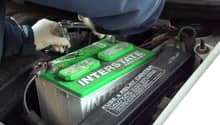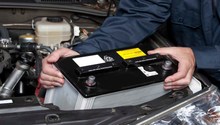Dodge Ram: How to Jump Start Battery
Whether your problem is a result of you not using the vehicle for a long time, a dead battery, or something as simple as not enough fuel in the tank, we have remedies and most of which you can do yourself.
This article applies to the Dodge Ram 2nd, 3rd, and 4th Generations (1994-Present).
Having a dead battery can ruin anyone's day. Not only will it keep you from getting where you need to go, but it will also cost you if you don't have the necessary equipment. Learn how to jump start your car and always be prepared with this helpful article. Continue reading as this article will guide you in the steps to jump start your truck, and also list some reasons why your car might not start.

Note
- Those with AAA memberships get free jump starts.
- Uber is a cheap way to get jump starts, around $8-$10.
- Towing companies and auto shops could charge as much as $75.
Materials Needed
- Another vehicle
- Ratchet and sockets
- Wire brush
- Baking soda
- Jumper cables
- Battery charger
- New battery ($125-$250)
- New battery cables ($50-$100)
- New spark plug wires ($75)
- New air filter ($20)
- New PCV valve ($8)
- Eye protection and rubber gloves
Step 1 – Jump start the vehicle
The easiest and least expensive method to start a Dodge Ram is to jump start it. Follow the instructions below. The Dodge Ram's ECU (electronic control unit) requires 12 volts to function. When jump starting, allow the truck's charging system to charge the battery sufficiently by revving the engine at about 3,000 rpm for 10 to 15 minutes to reach 12 volts.
To jump start your truck:
- Position the "charging" vehicle close to front end of the Dodge Ram.
- Open the engine compartment of both vehicles.
- Remove any battery covers and/or cable covers.
- Attach positive (red) jumper cable lead to Dodge Ram positive battery terminal.
- Attach positive lead to "charger" vehicle.
- Attach negative (black) lead of jumper cable to negative terminal of "charging" vehicle.
- Attach negative lead to Dodge Ram negative battery terminal.
- Make sure all connections are secure.
- Start "charging" vehicle and allow engine to idle for a few minutes.
- Start your Dodge Ram.
- Allow the Dodge Ram charging system to charge the battery.
- Remove jumper cables in reverse order.
If you are using a "trickle" charger to charge a dead battery, follow the manufacturer's instructions about how to connect the battery to the charger and how long to charge it.
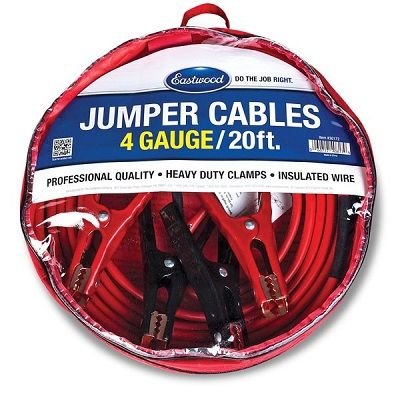
Figure 1. jumper cables. 
Figure 2. A typical battery charger.
Pro Tip
If you have not driven your vehicle for a long time, for example for a month or more, and the battery is extremely low on energy, you may have to leave the "charging" vehicle connected to the Ram for as long as 30 minutes to bring the battery up to a point where it can start the engine.
Step 2 – Charge the battery
If jump starting the vehicle does not remedy the problem, remove the battery and charge it with a battery charger overnight or longer.
Pro Tip
Follow the manufacturer's instructions when using a battery charger.
Step 3 – Make sure you have enough gas
If you don't have enough gas in the tank, your truck won't start or stay started. If your gauge reads "empty," fill the tank.
Pro Tip
"Bad" gas can prevent your Ram from maintaining an idle. Add a gasoline treatment like Heet to the gas to absorb excess water in the fuel.
Step 4 – Check the battery cables
Worn battery cables do not allow enough current to pass to the starter. Check the condition of the battery cables for cracks, breaks, and corrosion. Replace as necessary.

Step 5 – Check the battery connections
If you have loose or corroded battery connections, this can also lead to problems.
- If you notice corrosion on one or both of the terminals, clean the terminals. Warning: Always wear professional eye protection and thick rubber gloves when working near a battery to prevent serious injury. Use baking soda to neutralize any battery acid on the terminals, and a wire brush to completely remove any corrosion.
- Check for a loose cable and tighten as necessary.
Step 6 – Check for a vacuum leak
A vacuum leak can cause your engine to idle, and then die. Click on the video below to diagnose and remedy an EVAP (evaporative emissions control system) leak.
Featured Video: How to Repair EVAP Codes
Step 7 – Replace other parts
Other worn parts can cause your Ram to not start or start and die. These include worn spark plug wires, a clogged or worn PCV (positive crankcase ventilation) valve, or a clogged air filter. Check the plug wires for cracks, clean or replace the PCV valve, and replace a clogged air filter as needed.
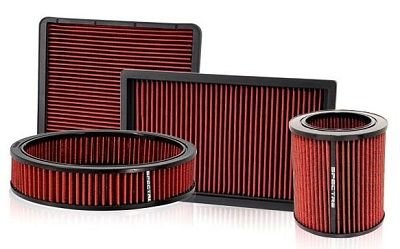
Figure 4. Replacement air filters. 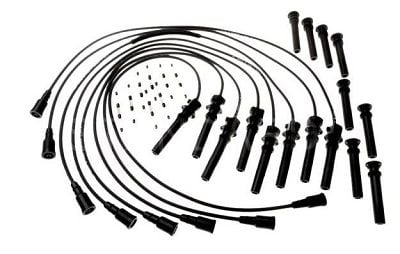
Figure 5. New spark plug wires.
Related Discussions
- Engine Dies While Idling After Jump Start - DodgeForum.com
- 2008 Ram Not Starting - DodgeForum.com
- Truck Won't Stay Running - DodgeForum.com

